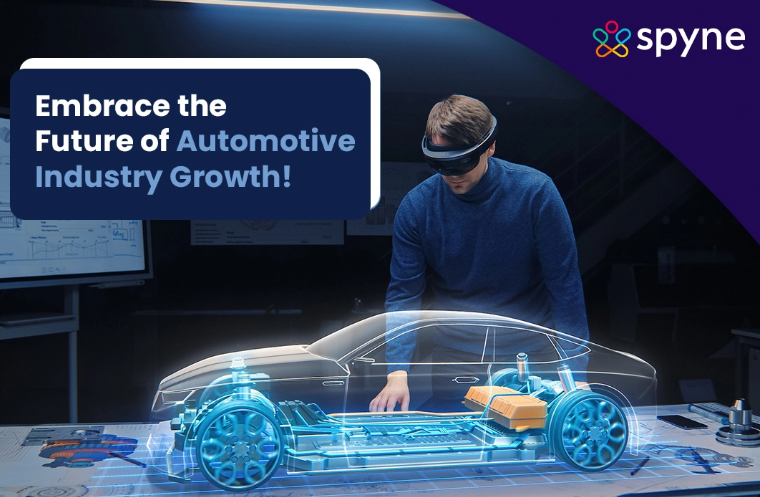The automobile sector is going through an unparalleled period of change. Design, manufacture, sales, and ownership of cars are all undergoing significant changes due to technological breakthroughs, consumer preferences, and environmental concerns. Auto dealers need to stay current on these new trends if they want to guarantee that their business survives and remains competitive for years to come. This article explores some of the top trends shaping the future of automotive industry and how they can impact your dealership.
1. Autonomous Vehicles (AVs) and the Future of Mobility
Self-driving automobiles, or autonomous vehicles, have the potential to completely change the transportation industry. Even while entirely autonomous vehicles are still in the research and development phase, sensor and artificial intelligence (AI) developments are opening the door for a time when cars may navigate highways without human intervention.
It is yet unclear how AVs will affect car ownership. The customer base of Buy Here Pay Here (BHPH) dealerships, which serve consumers with poor credit, may change if autonomous vehicles become more widely available through ride-sharing services or subscription models. However, AVs might also open up new business prospects for dealerships, such as servicing and maintaining these cutting-edge cars.
2. The Rise of Electric Vehicles (EVs)
The revolution of electric vehicles is in full swing, impelled by government regulations, environmental concerns, and consumer demand for cleaner transportation means. Battery technology is improving at a rapid pace and is assuring better mileage while reducing charging time. All traditional car manufacturers are already heavily investing in the development of EVs; soon, there will be available on the markets a myriad of electric car models.
This will make it necessary to change the dealership’s technology. Invest in training your sales force about the benefits and features of EVs and ensure that your service department can fix them. Consider offering charging stations at your dealership as a way to enhance customer convenience and attract potential EV buyers.
3. The Sharing Economy and Changing Ownership Models
The model of car ownership is changing. This translates to a high demand for services like car-sharing and ride-hailing apps, especially in urban areas. This might eventually bring down aggregate car ownership, thus affecting dealerships dependent on traditional models of sale.
Nevertheless, this trend also creates some opportunities. Dealers can team up with car-sharing platforms to supply cars or consider short-term rentals themselves. Lately, subscription services for car ownership could be emerging from dealerships.
4. Connected Cars and the Rise of In-Vehicle Services
Modern cars are becoming increasingly connected, offering a range of in-vehicle services. These can include navigation systems, internet connectivity, entertainment options, and real-time traffic updates. This connected car technology opens up a clear path toward more personalized in-car experiences and dealerships’ prospective new revenue strategies. Just imagine subscription services for advanced features like driver assistance packages or remote diagnostics.
5. The Evolving Customer Journey
Car buying is changing rapidly in terms of how new vehicle buyers are discovering, researching, and buying vehicles. With today’s tech-savvy consumer, online research time is expended before ever stepping into any dealership. This places a dealership in a position where they need to have an effective online presence.
Have a user-friendly website with excellent photo inventory, all vehicle details available, and pricing. Get listed at the top of online search results through search engine optimization. Utilize social media marketing by creating engaging content for prospects.
6. The Importance of Data and Personalization
Data generation in the automotive business is increasing more than it has historically. Utilizing this data helps enhance dealership operations and personalize the client experience. Examine consumer information to learn about their inclinations and purchasing patterns. Use this data to customize your marketing campaigns and adjust your sales strategy to meet the needs of specific clients.
- Preparing Your Dealership for the Future: The future of automotive industry is full of possibilities. You can adapt your dealership’s strategy and embrace future changes by staying informed about these emerging trends. Here are some actionable steps:
- Invest in Training: Train your sales team on new technologies and changing consumer preferences.
- Embrace Digital Transformation: Develop a robust online presence and leverage technology to improve efficiency and personalize customer experiences.
- Focus on Customer Service: Build strong customer relationships and provide exceptional service to maintain loyalty in a changing marketplace.
- Stay Flexible and Adaptable: Be prepared to adjust your approach as new trends emerge and the industry continues to evolve.
Conclusion
While there is uncertainty over the future of automotive industry, one thing is sure: innovation is propelling change. You can ensure your dealership sustains itself going forward by embracing these new trends and modifying your business plan. Recall that the secret is to keep your attention on your customers’ demands, use technology efficiently, and be ready to change and grow with the times. As ownership arrangements change, the Buy Here Pay Here (BHPH) market, for instance, could need to look into innovative financing options.
However, dealerships may seize new possibilities and create enduring client relationships that will help them advance in the constantly changing automobile industry by prioritizing customer service, innovation, and a data-driven strategy. The future is bright for dealerships that can adapt to change and look ahead with a forward-thinking strategy.


